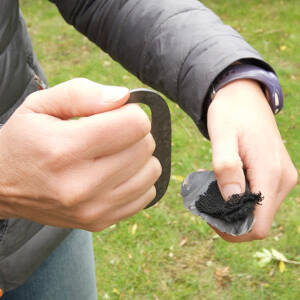Fires: methods of ignition
There are many ways to start a fire. We look at the pros and cons of some of the main ones.
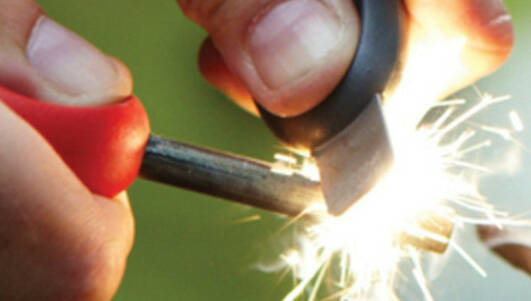
Introduction
There are a multitude of ways to ignite a fire and many tools to help you to choose from (Muddy Faces stock a range of fire lighting resources). Here we give a brief summary and a few pros and cons of each.
One of the key points in fire lighting that applies to all methods of ignition is to have a good supply of dry tinder and kindling ready to use. Whatever method of ignition you won’t be able to ignite a pile of damp logs!
Look at our creating and maintaining a fire activity for more information about preparation.
What you'll need
- dry tinder
- kindling
- wood
This activity has been provided by
Useful items from our shop
Environmental Considerations
Consider the environmental impact of preparing, carrying out & completing this activity. Could this impact be reduced? Specific considerations for this activity could include:
- clear up and ‘leave no trace’
Health & Safety Considerations
Follow your usual operating procedures and carry out appropriate risk benefit assessments.
Some considerations particular to this activity include:
Matches:
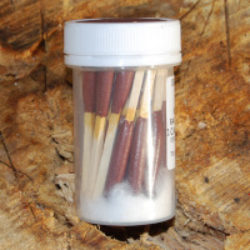
Matches are an easy way to ignite a fire and having a tub of waterproof matches in your store for emergencies can be useful, but fire lighting with matches lacks challenge.
Standard matches:
Pros - simple way to ignite a fire
Cons - easily become damp and ineffective when being used out doors and ineffective in wind and rain
Waterproof matches:
Pros - have extra long heads that will burn in wind and rain
Cons - need to be used and stored with caution
Lighters:
Pros - like matches you can create an instant flame
Cons - they are difficult to use for children. The top of the lighter can get hot when the flame is going for any length of time. With some types of lighters the flints can get damp and not work so well if at all
Note from Liz, founder of Muddy Faces: “I have a rechargeable turbo lighter with a flick up lid for “just in case”. I have had it 10 years and its never run out as I hardly ever use it. Consider rechargeable lighters and avoid single use plastic ones.”
Ferrous rod fire steel:
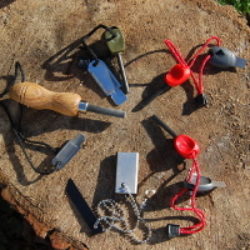
Fire steels all work by striking a steel surface against a ferrous rod to create a spark – for more information check out our how to use a fire steel activity which gives an overview of the different types available.
Pros - fire steels come in all sorts of shapes and sizes, including ones that are better for use with smaller hands if you’re working in Early Years. Can be used in wet conditions.
Cons - the ferrous rod will eventually wear away and need replacing or it may break. It can oxidise if not used for a while or kept in damp conditions.
Traditional flint and steel:
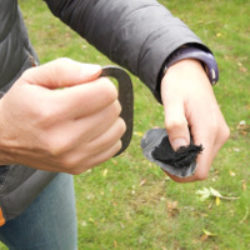
See our traditional flint & steel activity for more information and instructions on how to use.
Pros - experiencing a traditional and more challenging technique.
Cons - needs to be used with char cloth, higher skill level required, fewer sparks created compared to fire steel. To make your own char cloth look at our making char cloth activity.
Magnifying glass (solar ignition):
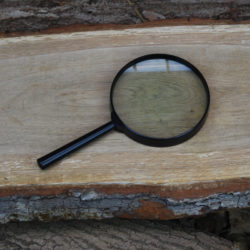
Using a glass lens (convex) or even a tiny plastic magnifying sheet and holding it in between the sun and some tinder will cause ignition to take place.
Hold the lens close to the tinder and then move it towards the sun slowly to create a tiny pinprick-sized focal point of light (photons) on the tinder.
Pros - learning that comes from experimenting and exploring the physics of light (optics); it is fun (Liz: “I spent hours as a child using a lens for pyrography – solar art”)
Cons - only works on a sunny day, most effective if used with char cloth.
Parabolic mirror (solar ignition):
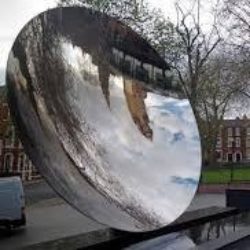
Like using a lens or magnifying glass, the parabolic mirror works by concentrating the photons of the sun into a focal point to ignite tinder.
Pros - fun to experiment with and explore the physics
Cons - you will need sunshine!
Image: © Copyright Glyn Baker and licensed for reuse under Creative Commons Licence.
Friction - bow drill & hand drill:
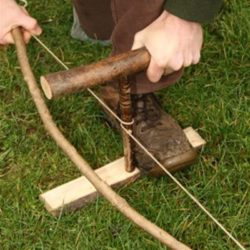
Using a bow drill is an advanced fire lighting technique using friction. A bow drill uses a bow to rotate a spindle of wood into a base board. The heat generated from the friction is used to ignite the tinder. The type of woods used is very important to the success of the process. Dave Watson from Woodland Survival Crafts runs interesting courses on bow drills.
The hand drill method is like the bow drill but you use both hands to rotate the spindle, rather than a bow.
Pros - a challenging traditional method, using natural materials
Cons - advanced technique and requires a lot of patience and effort
Fire piston:
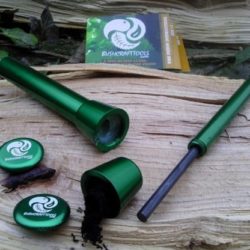
Creating ignition by air compression – amazing!
Check out how to use a fire piston on our Bushcraft & Survival skills information page.
Pros - awe and wonder! simple and reliable device that can be used in moist conditions
Cons - expensive
Disclaimer: Muddy Faces cannot take any responsibility for accidents or damage that occurs as a result of following this activity.You are responsible for making sure the activity is conducted safely.
Key Features
- Age Range 6+
- Duration Less than an hour
- Location Anywhere
- Season Any
- Time of Day Anytime
-
Categories:
Fire, Shelters & Bushcraft
fire
